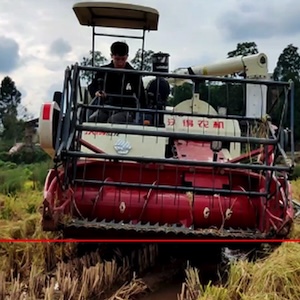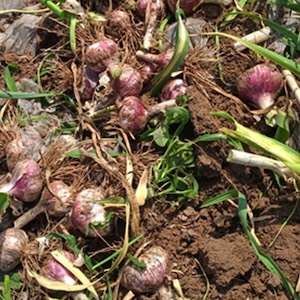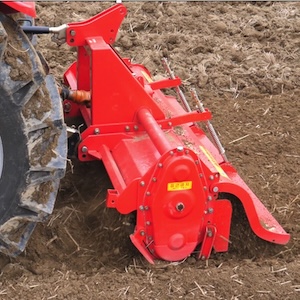Improving building energy modelling by applying advanced 3D surveying techniques on agri-food facilities

Published: 27 September 2017
Abstract Views: 2727
PDF: 757
HTML: 246
HTML: 246
Publisher's note
All claims expressed in this article are solely those of the authors and do not necessarily represent those of their affiliated organizations, or those of the publisher, the editors and the reviewers. Any product that may be evaluated in this article or claim that may be made by its manufacturer is not guaranteed or endorsed by the publisher.
All claims expressed in this article are solely those of the authors and do not necessarily represent those of their affiliated organizations, or those of the publisher, the editors and the reviewers. Any product that may be evaluated in this article or claim that may be made by its manufacturer is not guaranteed or endorsed by the publisher.
Similar Articles
- Alessandro Parenti, Piernicola Masella, Lorenzo Guerrini, Antonio Guiso, Paolo Spugnoli, Energetic and economic viability of olive stone recovery as a renewable energy source: a Southern Italy case study , Journal of Agricultural Engineering: Vol. 45 No. 2 (2014)
- Alina Evelyn Badillo-Márquez, Isaí Pardo-Escandón, Alberto Alfonso Aguilar-Lasserre, Constantino Gerardo Moras-Sánchez, Rita Flores-Asis, Intelligent system based on a satellite image detection algorithm and a fuzzy model for evaluating sugarcane crop quality by predicting uncertain climatic parameters , Journal of Agricultural Engineering: Vol. 55 No. 4 (2024)
- Shadrack Kwadwo Amponsah, Ahmad Addo, Komla Dzisi, Jean Moreira, Sali Atanga Ndindeng, Comparative evaluation of mechanised and manual threshing options for Amankwatia and AGRA rice varieties in Ghana , Journal of Agricultural Engineering: Vol. 48 No. 4 (2017)
- Daniele Duca, Andrea Pizzi, Manuela Mancini, Giorgio Rossini, Chiara Mengarelli, Alessio Ilari, Giulia Lucesoli, Giuseppe Toscano, Ester Foppa Pedretti, Fast measurement by infrared spectroscopy as support to woody biofuels quality determination , Journal of Agricultural Engineering: Vol. 47 No. 1 (2016)
- Angelo Fabbri, Chiara Cevoli, Estimation of semolina dough rheological parameters by inversion of a finite elements model , Journal of Agricultural Engineering: Vol. 46 No. 3 (2015)
- Andrea De Montis, Amedeo Ganciu, Fabio Recanatesi, Antonio Ledda, Vittorio Serra, Mario Barra, Stefano De Montis, The scientific production of Italian agricultural engineers: a bibliometric network analysis concerning the scientific sector AGR/10 Rural buildings and agro-forestry territory , Journal of Agricultural Engineering: Vol. 48 No. s1 (2017): Special Issue
- Daniele Duca, Giuseppe Toscano, Andrea Pizzi, Giorgio Rossini, Sara Fabrizi, Giulia Lucesoli, Andrea Servili, Valeria Mancini, Gianfranco Romanazzi, Chiara Mengarelli, Evaluation of the characteristics of vineyard pruning residues for energy applications: effect of different copper-based treatments , Journal of Agricultural Engineering: Vol. 47 No. 1 (2016)
- Ernest Ekow Abano, Livingston Kobina Sam-Amoah, Ato Bart-Plange, Variation in ultrasonic frequency and time as pre-treatments to air-drying of carrot , Journal of Agricultural Engineering: Vol. 43 No. 4 (2012)
- Eleonora Iaccheri, Chiara Cevoli, Santina Romani, Marco Dalla Rosa, Giovanni Molari, Angelo Fabbri, Simple and efficient approach for shelf-life test on frozen spinach and parsley , Journal of Agricultural Engineering: Vol. 52 No. 3 (2021)
- Alina Evelyn Badillo-Márquez, Jonathan J. Cid-Galiot, Rubén Posada-Gómez, Alberto Alfonso Aguilar-Lasserre, Automated system for the detection of risk in agricultural sugarcane harvesting using digital image processing and deep learning , Journal of Agricultural Engineering: Vol. 55 No. 3 (2024)
<< < 5 6 7 8 9 10 11 12 13 14 > >>
You may also start an advanced similarity search for this article.

 https://doi.org/10.4081/jae.2017.677
https://doi.org/10.4081/jae.2017.677











